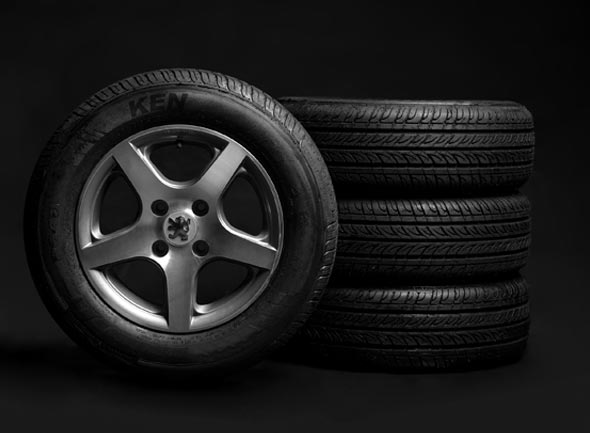The difference between radial and bias tires
In this article, we discuss the differences between these tire technologies, including the pros and cons of radial and bias tires.

Are radial tires superior to bias tires?
In this article, we discuss the differences between these tire technologies, including the pros and cons of radial and bias tires.
The production structure of tires is in two forms: RADIAL and BIAS. How bias tires are produced is older than radial tires. The difference between them may seem small, but it has a big impact on how the tire works.
1- Bias tires
The structure of bias tires is made of cross-linked tires at an angle of 30 to 40 degrees and crosswise on top of each other, the material used is nylon fabric. The rigid internal structure of this type of tire causes less contact with the ground and may also lead to overheating.
Most bias tires consist of 4 layers, which means that they have 4 layers of reinforcing wire. The more layers, the stronger the rubber. For heavier vehicles, 6-layer, 8-layer and even 10-layer tires are produced. In bias rubber, the side wall and the tread are both reinforced with special adhesives.
Pros of bias tires:
• Harder side walls due to cross construction
• Smoother riding on uneven surfaces
Cons of bias tires:
• High roller resistance can affect fuel consumption.
• The effect of rotation causes the loss of traction when turning.
2- Radial tires
The structure of the reinforcing wires in radial tires is placed at an angle of 90 degrees to the direction of movement. Each additional layer is placed in the same direction as it is below it. Then, reinforcing belts are added. Belts can be made from woven strands of steel, nylon, Kevlar or other materials. Finally, more rubber is applied to the belts to create a tread.
In a radial tire, the side wall and the tread act as two independent parts of the tire. Radial tire manufacturing has made significant progress since the early 1970s.
In short, radial tires are better tires in terms of high speed tolerance, greater safety and driving comfort, and of course their cost is higher than bias tires.
Pros of radial tires:
• Withstands more pressure under heavy loads and works cooler.
• Steel straps have a harder structure and resistance to puncture.
• Uniform contact with the ground creates uniform tread wear
• Excellent harness
• Less fuel consumption
• Driving softness due to more flexibility of the tire wall
• Better performance on wet roads
• More effective braking
• Better performance on road turns
Disadvantages of radial tires:
• Severe braking can damage the side wall.
• Harder tread increases tire noise.
